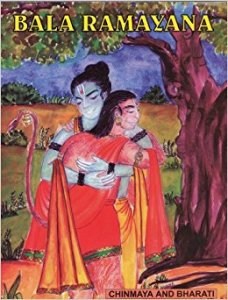As a journal of education and by extension we include culture and the arts. This also extends our responsibility of the very spectrum of the India’s many languages that are now reportedly facing extinction. The recent reports from expert bodies also names some of the reportedly 40 odd tribal languages, from the Nilgiris hills; we have duty cast upon us to touch some of the government polices in the promotion of India’s classical languages.
The coming to power at the Centre of the BJP party and the hindutva government, the issues of promoting Hindi language too has heated up the debate over the use of Hindi in government administration and education medium in such areas like writing competitive exams. Mr. Prakash Javadekar, the Union HRD minister has observed on his recent visit to Mysore that the Central Institute of Indian Languages for 22 Indian languages would release a Bala Ramayana. May be the purpose is to promote national unity. It is welcome to do so.
 One more important goal, as we see, was to provide data of the words of Indian languages to major private companies like the Google and IBM for machine translation. This also the minister did. The CIIL would collaborate in providing the words. Over the last eight years the CIIL has collected 10 to 20 million Indian language words and these words are the new data for the machine translation.
One more important goal, as we see, was to provide data of the words of Indian languages to major private companies like the Google and IBM for machine translation. This also the minister did. The CIIL would collaborate in providing the words. Over the last eight years the CIIL has collected 10 to 20 million Indian language words and these words are the new data for the machine translation.
Learning multiple languages
The latest developments show that people are learning multiple languages. The Tamil Nadu government pioneered in getting classical language status of Tamil and following which Kannada and also Malayalam and Telugu too got the status. The Kannada Studies Chair at the JNU is now trying to get students to learn Kannada free for want of students! May be in time there would be students, may be from foreign countries too, to learn Indian languages.
The Union minister said in Mysore that Israel, a country with only eight million people, teaches course in its national language. But what the minister failed to enlighten the audience is that in India there is the domination of English language. As the minister said that in India 9.5 lakh students wrote the National Eligibility cum Entrance Test (NEET) in English, while only 1.5 lakhs students wrote it in Hindi. Only a few students wrote in vernacular languages like Kannada and Marathi.
Mother Language Day
One more development of recent importance is the latest observation of the International Mother
Language Day celebrated in Bangalore by declaring the Bangalore Declaration of the Linguistic Rights.
This was on February 21; this is the day of Mother Language’s day.
The International Mother Language Day on February 21 this year will see release of Bengaluru Declaration of Linguistic Rights seeking to protect the rights of regional languages in India, which has lost 220 languages in the last 50 years.
For linguistic rights activists, Bengaluru came to the limelight when it asserted the Kannada identity during the protest against Hindi imposition. The city will now play host to a national conference on February 19 and 20, where representatives of 30 regional languages from different corners of the country will thrash out issues to prepare the declaration.
In 2010, United Nations Educational, Scientific and Cultural Organisation (Unesco) increased the number of endangered regional languages in India, Nepal, Bangladesh and Sri Lanka from 17 to 300. Activists say the numbers will only rise further if the language policy continues to marginalise regional languages.
There are 1,652 languages in the country but only 22 get official status. The Sitakant Mahapatra Commission recommended inclusion of 38 other languages in the Eighth Schedule in 2004 but till today no government has done anything to implement it,” he said. Priyank K S from Banavasi Balaga said the goal is to give people the right to decide which language they want. “If Metro comes up in Mangaluru, then people there should have the right to choose whether they want Tulu over Kannada,” he said.
Future of Indian Languages
The Indian languages and literature face a bleak future for the many initiatives taken in earlier years like the Sahitya Akademi Awards, Gnanpith Award and other awards for recognising outstanding creative writers in the Indian languages who are now caught in regional politics like the Dravidian and Hindi chauvinists’ – very narrow and very divisive politics. Thus, increasingly we see that after thirty years of the functioning of the Gnanpith Award, the really most classical language or languages like Tamil got only two awards! While some others like the Kannada had won more than seven or so times. Of course, you have to see genuine literary creative outputs purely on merit. But what is not exposed is also the fact that some states like Tamil Nadu had introduced more harmful practices like the gross interference of particular politicians who, in one instance, has repeatedly got himself repeated for many years! Sri Sitakant Mahapatra, himself a Gnanpith Award winner had confirmed this fact in a letter to the editor of this Journal.